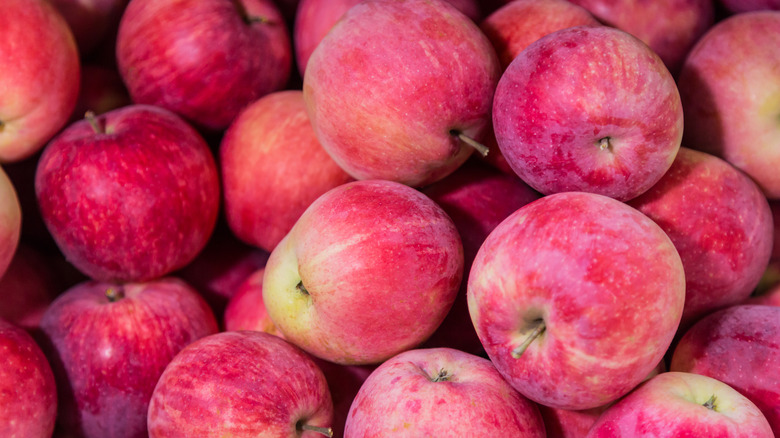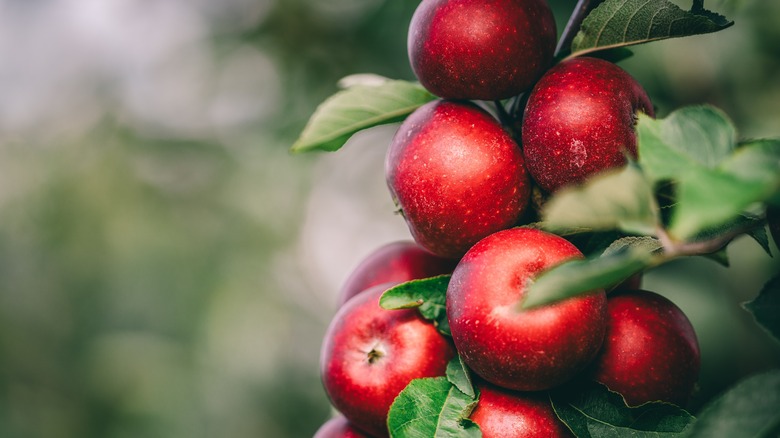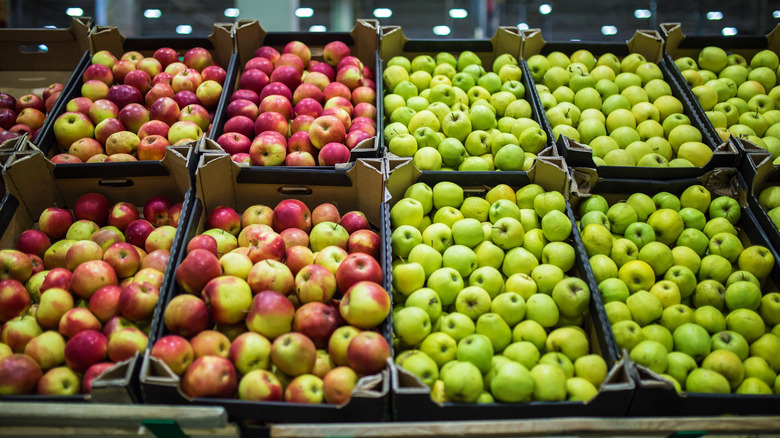Why Grocery Store Apples Have That Thin Layer Of Wax
Apples lend their natural sweetness and crunch to a wide array of recipes, from classic apple pies and crisps to salads, savory dishes, flavorful ciders, and juices. Whether it's a tart Granny Smith or a mild Gala, the crisp bite of an apple is unmistakable. Besides being a tasty snack, apples are also packed with nutrients like vitamin C, potassium, and dietary fiber. In fact, Healthline reports that apples have even helped lower cholesterol levels in some cases, thanks to their soluble fiber. Additionally, their high water content makes apples a naturally refreshing treat.
However, while selecting apples at the grocery store, you might notice they have a waxy coating. This layer of wax, which might seem contrary to the apple's natural, clean appeal, actually plays a crucial role. It forms a protective barrier against pests and helps retain moisture, ensuring the apples remain crisp from the orchard to your kitchen.
The wax extends the shelf life of apples
Apples, being composed largely of water, naturally produce a layer of wax to retain moisture and prevent drying out. This natural wax coating is also found on other fruits like lemons, oranges, and pears, even when freshly picked from the tree. The wax helps shield the apple from pests and fungi, preventing them from penetrating its flesh. However, once apples are harvested and prepared for shipment to grocery stores and supermarkets, they undergo a thorough cleaning process that removes this wax, along with any dirt or bacteria that may have adhered to it during harvesting.
After the natural wax is washed away, a new layer is applied to prevent the apple from losing moisture. This wax layer typically consists of natural carnauba wax, and various food-grade synthetic waxes. Besides aiding in moisture retention, this wax also forms a protective coating, preventing bacteria and other contaminants from entering through any nicks in the apple's skin. While part of the wax's purpose is to prolong the apple's shelf life, it also enhances the fruit's appearance, making it look shiny, fresh, and more appealing to consumers.
Should you remove the wax?
The wax used to coat apples and other produce is made from natural or food-safe ingredients and is intended to be safe for consumption. There's no need to meticulously remove every bit of wax from an apple before eating it. However, like all produce from the grocery store, it's wise to rinse your apple to remove any accumulated dirt (though you should avoid washing apples until you're ready to eat them, as this can shorten their shelf life). The FDA advises against washing apples with any kind of soap or special produce wash, as the chemicals can penetrate the peel and potentially cause illness. Instead, simply use a soft bristle brush to gently scrub the apple, and then you're good to go.
Apples are a fantastic and delicious addition to any diet. While their waxy coating might seem unappealing, it's there to keep the apples safe for consumption, so there's no need to worry about it before you dig in.


